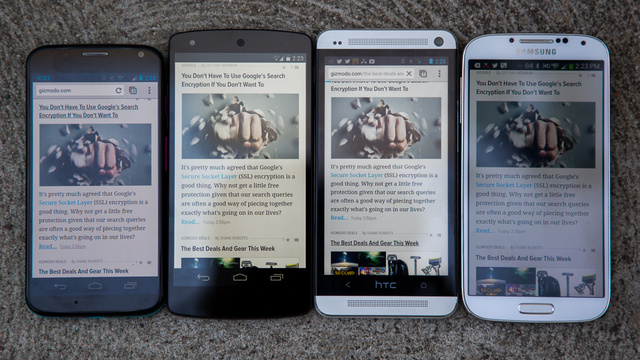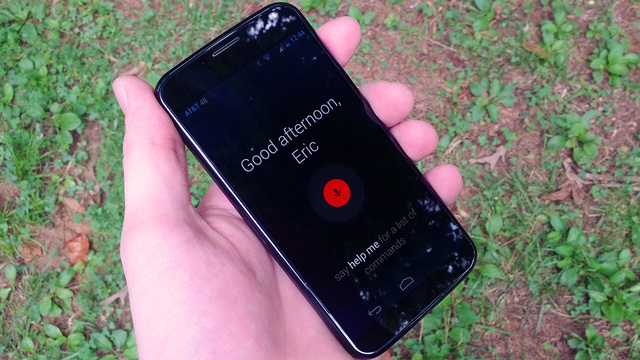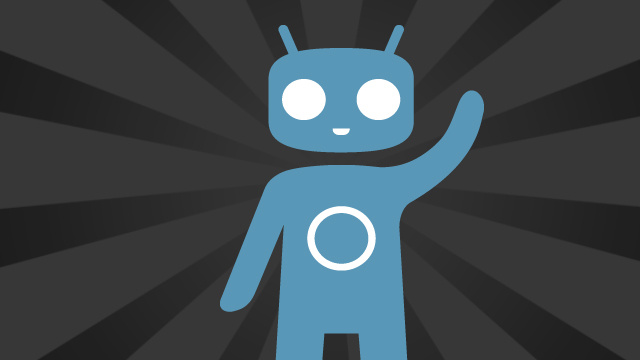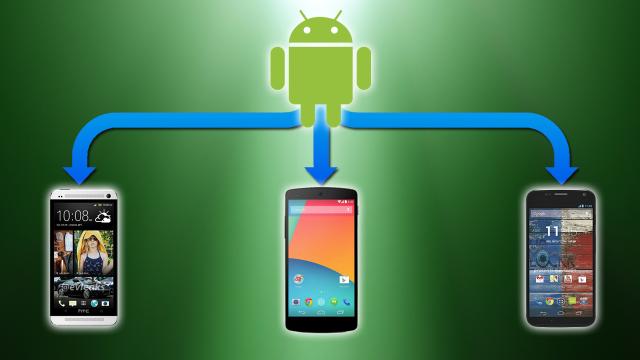Put simply: there are too many Android phones out there. The only way to know which ones are worth your time is to follow tech news every day. For those that have other things to do, here’s what matters when buying a new device.
For starters, the golden rule: there is no “best” Android phone. There’s only the best Android phone for you. If you like it and if it’s in your price range, it’s your best Android phone and no one gets to tell you otherwise. The same if you’re giving a phone to someone else: assess their needs, not your own prejudices, when making a selection.
When (And How Often) Should I Upgrade?

When to upgrade is going to depend heavily on what type of user you are. Do you like keeping up with the latest phones? Do you break your phones frequently? Can you afford to buy phones off- contract, and are you careful to keep your phone in good condition so you can sell it for a reasonable sum if you decide to upgrade? How upgrades apply to you will depend heavily on these factors, but in general here are your main options for upgrading your phones:
- Regular two year contracts, for the average upgrader: The dominant method of selling phones in Australia is to sign up for a two-year contract. You pay a fixed sum every month, and for that you get the phone plus service. The more you pay, the larger the voice and data inclusions. While we’re not always fans of being tied to a single network and device, for most people who don’t need to keep up with the Joneses, this is a perfectly fine interval. When the two years is up, you sign a new contract and get a new phone.
- Outright buy phones for the frequent upgrader: Buying your device outright means you can use a prepaid plan (we have some recommendations) and enjoy the flexibility of changing both your phone and network when the need arises. The downside is that you’ll have to spend more initially, but that doesn’t necessarily mean spending a huge amount: you can pick up a brand-new Nexus 5 for $399. If you want to scratch that itch, this approach is the way to go.
However, just because you can upgrade doesn’t mean you should. We all experience gadget lust, but a handful of added features or a new version of Android are rarely worth an extra $300 or more every six months.
The best time of year to purchase your phone can also be a bit of a crapshoot. There’s never a guaranteed time where you’re sure not to see a new phone get released, but there are better times to buy. While the following can change from year to year, here are some common hot periods of activity:
- The first half of the year (Samsung, HTC): Over the last couple of years, HTC, Samsung, and Google have all had major products or platforms to announce within the same short time span: from February (when many new models are announced at Mobile World Congress) to June. The One, One X, Galaxy S4, and Google Play Editions of both companies’ major flagship phones were all announced sometime in this time frame over the last couple years. If you’re a fan of Samsung or HTC and you’re looking at an upgrade in February, it’s probably best to wait a couple months.
- The second half of the year (LG, Google, Motorola): During the last couple of years, LG and Google have both announced or released major phones between August and November. This is in part due to the fact that for the last two years, LG has been the one making the Nexus line of phones.
While we don’t always suffer delays, Australian versions of these phones don’t always come out at the same time as the rest of the world. You can easily buy grey import versions, but you need to make sure they support the networks you wish to use.
Of course, none of these periods are very far away from another product launch and, in a way, that’s the curse of Android. However, if you narrow it down by what manufacturer you want, you can usually pick out a reasonable time to buy a new model.
What Features Really Matter In A New Phone?

These days, it might almost be easier to list what doesn’t matter. In the early days of Android phones, the spec war was all-important because getting a faster processor could mean the difference between a smooth experience and a totally janky one. Nowadays, with quad-core processors, 1080p displays, and widely-supported 4G networks, a better emphasis might be placed on striking the right balance.
That being said, here are some key features to look at when deciding on what phone to get:
Camera
The camera is easily one of the most important features you can look for in a new phone. Not only is a smartphone the only camera most of us will carry around, but it’s also the feature with some of the widest variance between Android devices.
Don’t just go by the number of megapixels, though. It’s fairly common knowledge now that more megapixels doesn’t mean more better. Different manufacturers improve their cameras with different methods (for example, HTC famously launched a 4MP camera with bigger pixels to capture more light), but the best way to tell whether a phone’s camera is good enough for your needs is to take a look at some comparison tests. You can find review and comparison samples from just about any moderately popular Android device somewhere online.
Display
While we’ve covered whether or not you really need a 1080p display in your phone (tl;dr: unless you have a phablet, you’re probably trading battery life and processing power for a visual benefit you can’t discern), the difference between an AMOLED or LCD display can be an important factor. AMOLED displays tend to be brighter and more saturated, but use marginally less battery because they only light up the pixels they need. LCD displays can be more neutral and have realistic colour representation. Ultimately, it’s up to your preference, but when deciding which phone looks better, take a look at what type of display it is and how well it’s calibrated, rather than trusting that the phone with more pixels will look better by default.
Battery Life
One of the few features in Android phones that hasn’t been improved dramatically over the years is battery life. It’s gotten better, but the amount of things we do with our phones has also increased, meaning those losses are somewhat negated. There are two main schools of thought when it comes to approaching the battery life problem. Some devices like the Note family of phones choose to boost battery life by throwing in gigantic batteries, sometimes to the tune of 3000 mAh or more. Other devices like the Moto X aim for hardware optimisation to reduce battery usage and squeeze more power out of a regular-sized battery. Both options are good, but when in doubt, check some online battery comparisons to see which phones fare the best. Part of this may also be determined by how big you like your screen — if you enjoy giant screens, then you’ll probably end up with a big battery.
Manufacturer Skins
While your devoted Android enthusiast friend will tell you there’s nothing better than #holoyolo, the truth is that each manufacturer puts their own spin on Android and it’s not always horrible. Before you pelt me with fruit, here are some distinguishing features from various manufacturer skins:
- HTC Sense: Blinkfeed and Peel. While it might sound like an entertaining comedy duo, Blinkfeed and Peel are two particularly awesome features built in to the HTC One. The former is a news feed of your social content that lives on your home screen and, contrary to initial impressions, is actually pretty useful. Peel, on the other hand, makes use of the infrared port on the One to control your television and other IR-enabled boxes.
- Samsung Nature UX: Multi-Windows and Stylus Support. Samsung skins may be a bit of a crapshoot, but the one thing you can’t deny is that those the company to make styluses cool again with the Note family of devices. The multi-window feature that eventually rolled out to most major Galaxy devices also allows users to run multiple apps at once, which makes good use of all that extra screen real estate.
- Motorola: Touchless Controls and Active Notifications. Motorola’s skin is perhaps the least invasive, but the company still makes some changes. For example, the Touchless Controls app allows you to issue voice commands to your phone without touching your device. Active Notifications allows you to see your upcoming messages, jump straight to certain apps, and even turns on the display as soon as you pick up the phone.
Stock Android is great, don’t get me wrong. However, you can get almost all of the cool parts on nearly any device. If you want a little something extra, it’s OK to check out what the manufacturer has added in. This should be relatively easy since most companies will advertise their exclusive features heavily. If you decide you don’t like the skinned experience, you can usually root and install a custom ROM later.
Android OS Updates
This is something that used to be a major drama, but as we’ve discussed recently, the actual version of Android you’re on is beginning to matter less and less. Jelly Bean (4.1) and up bring all the Google Now hotness that gets everyone drooling and Ice Cream Sandwich is the new lowest common denominator for app support, which means that an overwhelming majority of devices are already running a relatively modern version of the OS. With new Play Services features coming to devices running versions as old as Gingerbread, updates aren’t as important as they used to be. That being said, if you’re a stickler for making absolutely sure you have the most up to date software, Google’s Nexus devices remain the best choice right now.
What If I Care About Rooting?

The landscape for rooting and installing custom ROMs on your phone has changed dramatically over the last few years. Between the proliferation of locked bootloaders and Nexus devices, there are now a few categories your phone can get lumped into that will determine how much support your phone will see. In descending order of likely support:
- Nexus devices: These are Google’s flagship phones and tablets and they’re designed to be the go-to platform for developers. As such, they include the ability to unlock right out of the gate. Furthermore, Android enthusiasts (read: the ones who develop the ROMs you love) gobble them up like candy canes at Christmas.
- Popular phones: In the past, your best bet when it came to rooting and installing custom ROMs on your phone was to buy the hardware that everyone was getting and hope for the best. Except for those mentioned above, that rule still tends to hold true.
If rooting your phone is important to you, here’s what you should definitely not get:
- Obscure devices with low specs: It’s probably possible to get root access on your Kyocera Rise of the Machines, but you shouldn’t count on a lot of popular ROM support in a timely manner.
- Devices with locked bootloaders: Locking a bootloader won’t guarantee that you can’t get root. However, with so many options available for phones that make root easily available, or at least don’t lock bootloaders, developer attention isn’t going to be as strongly focused on these devices as it has been in the past.
When it comes down to it, most of the major Android phones on the market right now are good and it’s hard to go wrong if you find a device that’s right for you. Set your priorities, do some research, and be happy with your choice.

Comments
2 responses to “How To Pick Your Next Android Phone: 2013 Edition”
I owned a HTC Desire Z for 3 years. It was a solid phone but the 512mb ram eventually meant that most new apps struggled. It was rooted and custom ROMed about 3 weeks after purchase. Running ICS was as far as I could get it.
I was going to keep my new Nexus 5 stock, 2 hours later it was rooted… This was not to install a custom ROM, it was to enable me to restore my titanium backups. I will keep the stock ROM in place and apply my favorite mods using the Xposed framework.
Price was a big selling point for me.
i recently got a galaxt s4 – rooted within hours when i discovered the dock can’t be customised… fixed that quick smart
Lets just post heaps of photos of the Moto X to remind everyone how hard it is to get in Australia shall we? I was going to get one if I could figure out a good way to get it without having to pay an absurd amount on mobicity for the puny 16gb version, but now I have my nexus 5, no regrets.